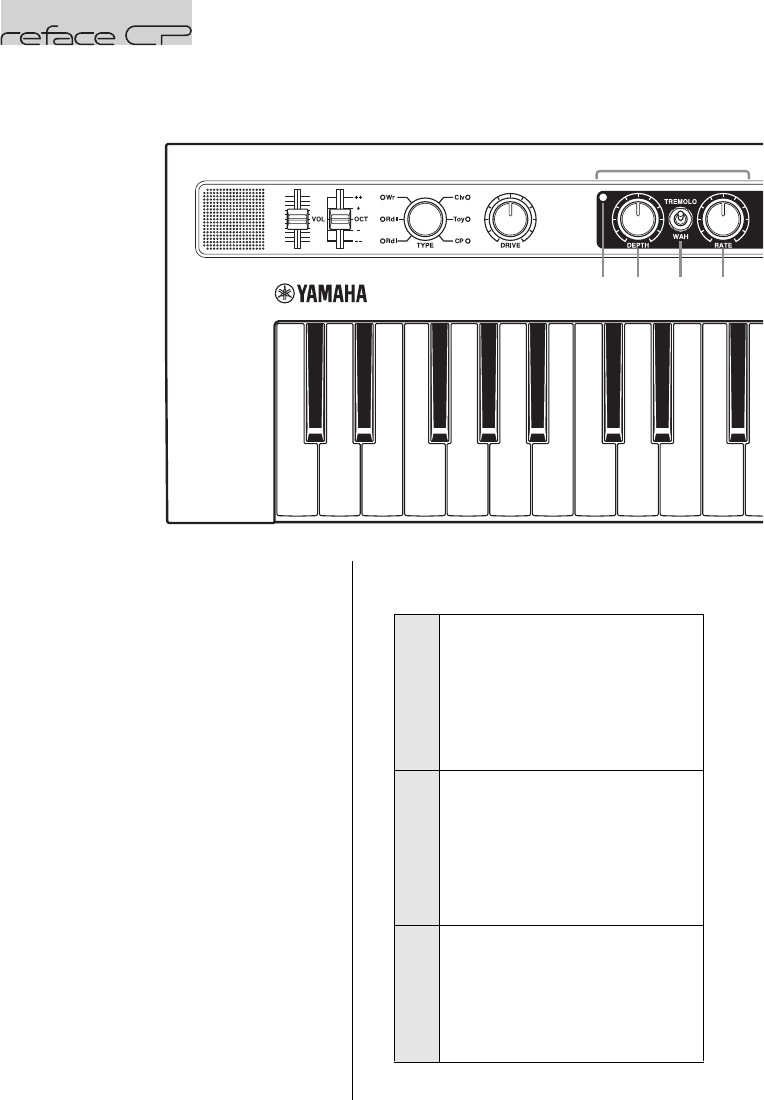
26
reface CS/DX/CP/YC Owner’s Manual
Functions of Front Panel Components
qBuilt-in speakers
For outputting the instrument’s sounds. If
you do not want sound to be output from
these speakers, turn the instrument on while
holding down the D2 key on the keyboard.
See page 41 for details.
No sound will be output from the built-in
speakers when headphones are connected.
w[VOL] (Volume) slider
For adjusting the instrument’s overall vol-
ume. When you move the slider up, the sound
output from the built-in speakers, the OUT-
PUT [R]/[L/MONO] jacks, and the
[PHONES] jack will become louder.
e[OCT] (Octave) slider
For transposing the keyboard in units of 1
octave. For example, when set to “+,” the
note C4 will be produced when you play C3
on the keyboard (see the illustration above).
The available settings are “++” (2 octaves
up), “+” (1 octave up), “OCT” (no change in
pitch), “-” (1 octave down), and “--” (2
octaves down).
r[TYPE] knob
For selecting different voice types.
qwe r t
y
y
-3
y
-1
y
-2
y
-4
C3C2
RdI
Sets a distinctive electric piano voice
from the early 1970s. This type of
electric piano is characterized by a
dark, heavy sound with sustained
notes. It sounds particularly good
when combined with the phaser effect
and was widely used in 70s jazz,
R&B, and soul.
RdII
Sets a distinctive electric piano voice
from the late 1970s. Compared with
the Rdl, it has a characteristically
bright, high-fidelity sound. It sounds
particularly good when combined with
the chorus or phaser effect and was
primarily used in the pop ballads and
fusion music of the 80s.
Wr
Sets a distinctive electric piano voice
that became famous in the late 1960s.
This type of electric piano is notable
for the gentle attack and fast decay of
flat metal reeds. Often combined with
a tremolo effect, it was widely used in
70s pop, R&B, and soul.
reface CP


















